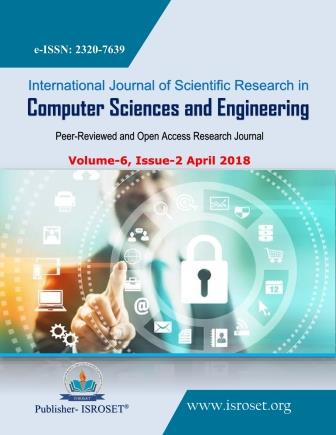A comparative study on the Assortment of Information Retrieval systems
Keywords:
Information Retrieval (IR), assortment, connoisseurAbstract
For thousands of years people have realized the importance of archiving and finding information. With the advent of computers, it became possible to store large amounts of information; and finding useful information from such collections became a necessity. Over the last forty years, the field has matured considerably. Several Information Retrieval (IR) systems are used on an everyday basis by a wide variety of users. This paper presents a brief overview of the comparisons of the few assortments of Information Retrieval (IR) models and the description of the connoisseur in the field. The information retrieval by submitting the queries bring out millions of documents which consume the precious time of the user. This effort gives the information to the user to save their time in retrieving the information from the massive information sources.
References
Zobel, Justin, and Alistair Moffat. “Inverted files for text search engines”, ACM Computing Surveys 38 (2),2006.
Zobel, Justin, Alistair Moffat, Ross Wilkinson, and Ron Sacks-Davis.”Efficient retrieval of partial documents”. IP&M 31 (3): 361-377. DOI: dx.doi.org/10.1016/0306-457300052 -5, 1995.
Zaragoza, Hugo, Djoerd Hiemstra, Michael Tipping, and Stephen Robertson. “Bayesian extension to the language model for ad hoc information retrieval”. In Proc. SIGIR, pp. 4-9, 2005.
Zukowski, Marcin, Sandor Heman, Niels Nes, and Peter Boncz. ”Super -scalar RAM-CPU cache compression” .In Proc. International Conference on Data Engineering, p. 59. IEEE Computer Society. dx.doi.org/10.1109/ ICDE. 2006.150.
L.Senthilvadivu, K.Duraiswamy “Conniving the Information Assimilation and Retrieval (INAR) system for the heterogeneous, multi related Information Sources”, World of Computer Science and Information Technology Journal pp.357-363,2011.
Zavrel, Jakub, Peter Berck, and Willem Lavrijssen. “Information extraction by text classification: Corpus mining for features”,2000.
Shian-hua Lin, Meng Chang Chen, Jan-ming Ho, Yueh-ming Huang - ACIRD: “Intelligent Internet Documents Organization and Retrieval“ IEEE Transactions on Knowledge and Data Engineering 2002
Lashkari, A.H.; Mahdavi, F.; Ghomi, V. “ A Boolean Model in Information Retrieval for Search Engines”, doi:10.1109/ICIME101, 2009
Frakes, William B. (1992). Information Retrieval Data Structures & Algorithms, Prentice-Hall, Inc. ISBN 0-13-463837-9.
Jasminka Dobsa, Faculty of Organization and Informatics, Comparison of information retrieval techniques: Latent semantic indexing (LSI) and Concept indexing (CI) published: Feb. 25, 2007, views: 1308
Zobel, Justin, and Philip Dart. “Phonetic string matching”. In Proc. SIGIR, pp. 166-173,1996. ACM Press.
C.D. Manning, P. Raghavan, H. Schütze. Cambridge UP, “Classical and web information retrieval systems: algorithms”, mathematical foundations and practical issues, 2008.
Managing Gigabytes. I.H. Witten, A. Moffat, T.C. Bell. Morgan Kaufmann, “The authority on index construction and compression”,1999.
Readings in Information Retrieval. K. Sparck Jones, P. Willett. Morgan Kaufmann, “ A collection of classical IR papers”, 1997.
Information Storage and Retrieval Systems. G. Kowalski, M.T. Maybury. Springer, "Takes a system approach, discussing all aspects of an Information Retrieval System.", 2005
G.G.Chowdhury. Neal-Schuman, “Introduction to Modern Information Retrieval”, 2003.
D.H. Kraft, C.L. Barry, C.T. Meadow, B.R. Boyce “Text Information Retrieval Systems”, 2007, Academic Press.
Jensen fv. Bayesian Networks and Decision Graphs. Technometrics, Volume 45, Number 2, pp. 178-179(2) 2003.
Anh, Vo Ngoc, Owen de Kretser, and Alistair Moffat “Vector-space ranking with effective early termination”. In Proc. SIGIR, pp. 35-42,2001. ACM Press.
Crestani, Fabio, Mounia Lalmas, Cornelis J. Van Rijsbergen, and Iain Campbell. “ A survey of probabilistic models in information retrieval”.ACM Computing Surveys30 (4):528-552,1998.doi.acm.org/10.1145/ 299917.
Downloads
Published
How to Cite
Issue
Section
License

This work is licensed under a Creative Commons Attribution 4.0 International License.
Authors contributing to this journal agree to publish their articles under the Creative Commons Attribution 4.0 International License, allowing third parties to share their work (copy, distribute, transmit) and to adapt it, under the condition that the authors are given credit and that in the event of reuse or distribution, the terms of this license are made clear.







